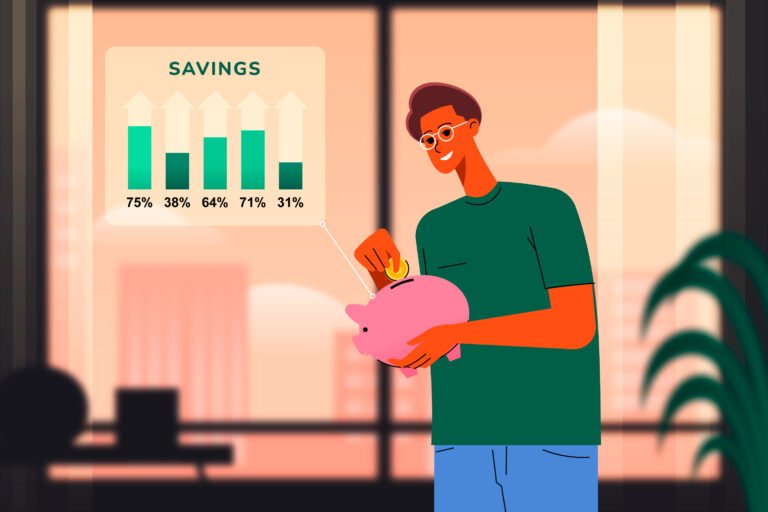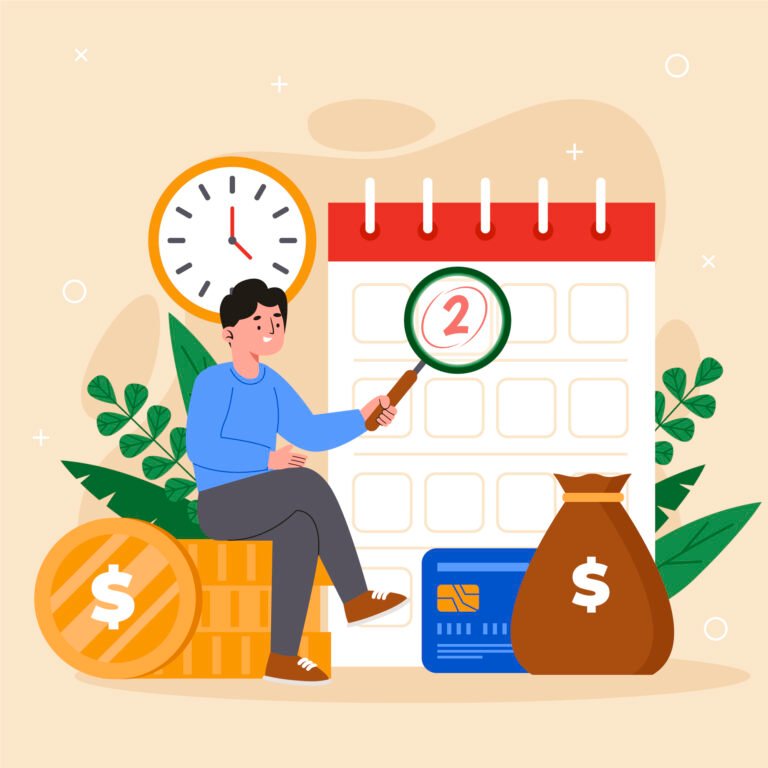1. 👶 Introduction: Welcoming a New Baby — And a New Budget
Baby essentials: Bringing a baby into the world is one of life’s most joyful milestones—but it also comes with a price tag. Many new parents are surprised by how quickly the costs add up in just the first year. From diapers and formula to medical visits and childcare, even the basics can stretch a family’s budget in unexpected ways.

Table of Contents
Why It’s Important to Plan for Baby Expenses
While love may be free, baby essentials aren’t. Financial planning helps ease the stress so you can focus more on your baby and less on bills. Whether you’re expecting your first child or expanding your family, knowing what to expect financially can help you make smarter, more confident decisions.
The Hidden Financial Impact of Year One
It’s not just about buying onesies or setting up a nursery. Year one comes with hidden costs—like unpaid parental leave, emergency medical expenses, and those last-minute items you didn’t know you’d need until you needed them. These surprise costs can derail even the most carefully crafted budget if you’re not prepared.
This guide breaks down the real cost of a baby in the first year and shows you how to plan ahead—so you can enjoy this new chapter without financial overwhelm.
2. 💸 The True Cost Breakdown of Baby’s First Year
What Most Parents End Up Spending
So, how much does it really cost to raise a baby in the first year? While the exact figure varies by lifestyle, location, and income, most estimates place the total somewhere between $12,000 to $20,000—and that’s just for the first 12 months.
These costs may seem staggering, but understanding where the money goes can help you budget wisely and avoid surprises.
🏡 National Averages vs. Real-World Costs
According to recent data from the USDA and parenting finance studies:
- Urban families tend to spend more due to higher childcare and housing costs.
- Rural and suburban families often save more on services but may pay more for transportation or limited access to secondhand gear.
- First-time parents usually spend more upfront compared to those reusing gear from a previous child.
Keep in mind: these averages are helpful benchmarks—but your actual costs may be lower or higher depending on your choices and circumstances.
🔁 One-Time Costs vs. Recurring Expenses
One-Time Costs are major purchases you typically only make once (or a few times):
- Crib and mattress
- Stroller and car seat
- Breast pump or bottle system
- Baby monitor
- Nursery furniture and decor
These can add up quickly—often totaling $2,000 to $4,000, depending on the brands and quality you choose.
Recurring Expenses, on the other hand, are monthly or ongoing costs that span the whole year:
- Diapers and wipes
- Formula or breastfeeding supplies
- Baby food
- Clothing (babies outgrow outfits fast!)
- Childcare or babysitting
- Health care co-pays, medications, or insurance premiums
These expenses can easily run $800–$1,500 per month, depending on your baby’s needs and whether you’re using daycare or staying at home.
3. 🧷 Essential Baby Gear and Setup
Crib, Car Seat, Stroller & More
Before your baby even arrives, you’ll likely spend a good chunk of your budget setting up the essentials. Some of these purchases are non-negotiable for safety, while others can vary in cost depending on your style and preferences.
🛏️ Nursery Setup Costs
Designing a nursery is exciting—but it can also be expensive if you’re not careful. Here’s a breakdown of typical one-time nursery expenses:
- Crib and mattress: $200–$500
- Changing table/dresser: $150–$300
- Rocking chair or glider: $150–$400
- Baby monitor: $50–$200
- Decor (curtains, rugs, lighting, paint): $100–$300+
If you go the minimalist route or purchase gently used items, you can keep costs on the lower end.
🚗 Baby Travel Gear
Some of the most crucial (and legally required) baby items fall under the travel category:
- Infant car seat: $100–$300 (convertible models may offer long-term savings)
- Stroller: $100–$600 (travel systems combine car seat + stroller for efficiency)
- Baby carrier or wrap: $40–$150
Always prioritize safety ratings over style. And remember, you can often find gently used versions in excellent condition for a fraction of the cost.
🛒 Buying New vs. Secondhand
Some gear is perfectly safe and sensible to buy secondhand—like clothing, swings, high chairs, and even strollers. However, certain items should always be purchased new due to safety standards:
- Car seats (unless you’re 100% sure of their history and expiration date)
- Cribs (avoid drop-side models or ones that don’t meet current regulations)
- Breast pumps (unless it’s a closed-system pump with replaceable parts)
Smart parents mix and match—splurging where safety matters, and saving where they can.
4. 🍼 Feeding Costs: Formula, Breastfeeding & Baby Food
What It Really Takes to Keep Baby Fed
Feeding your baby is a daily (and nightly!) task—and a major budget item in the first year. Whether you breastfeed, use formula, or do a combination, there are real costs involved that every parent should plan for.
🍼 Formula: Monthly & Yearly Cost
If you choose or need to use formula, costs can add up quickly:
- Powder formula: $0.50–$1.50 per ounce
- Monthly cost: $100–$250
- Annual estimate: $1,200–$3,000
Premium brands or specialized formulas (for allergies, sensitivities, or preemies) can be even more expensive. Buying in bulk, using store brands, or signing up for loyalty programs can help reduce costs.
🤱 Breastfeeding Supplies and Hidden Costs
While breastfeeding is “free,” there are still related expenses many don’t anticipate:
- Breast pump: $100–$300 (often covered by insurance)
- Nursing bras, nipple cream, breast pads: $50–$150
- Milk storage bags and bottles: $20–$100
- Lactation consultant (if needed): $100–$300 per session
- Extra calories and hydration for mom: Up to $50/month
If you’re exclusively breastfeeding, costs may be lower overall, but still worth factoring in—especially for working moms who need to pump.
🥣 Transitioning to Solid Foods
At around 6 months, your baby will start trying solids. Feeding gets more fun—and more variable:
- Baby food jars/pouches: $0.75–$2 each
- Homemade baby food: Much cheaper, but requires time and prep
- High chair and feeding accessories: $75–$200
Some parents follow the baby-led weaning approach (letting baby self-feed soft table food), which can reduce food costs and simplify meal prep.
5. 🧼 Diapering & Hygiene
The Dirty Details: Diapers, Wipes & More
It’s one of the least glamorous parts of parenthood—but also one of the most constant. Babies can go through 8 to 12 diapers a day in the early months, making diapering a major ongoing expense in year one.
🧻 Disposable vs. Cloth Diapers
Disposable Diapers
- Easy, convenient, and widely used
- Cost per diaper: $0.20–$0.40 (brand and size matter)
- Monthly cost: $70–$100
- Yearly cost: $900–$1,200+
Cloth Diapers
- Higher upfront cost, lower long-term spending
- Starter kit: $300–$500 (diapers, liners, wet bags)
- Requires regular washing (time, energy, water)
- Great for eco-conscious families
- Break-even point usually hits around 6–9 months
Some parents go hybrid—using disposables when traveling and cloth at home.
🧴 Diapering Accessories & Hygiene Products
Beyond diapers and wipes, you’ll need a few essentials to keep baby clean and rash-free:
- Wipes: $20–$40/month
- Diaper rash creams or ointments: $5–$15/month
- Changing pads and covers: $20–$50
- Diaper pail and refill bags: $50–$150/year
- Bathing supplies (baby tub, shampoo, lotion, washcloths): $100–$200 total
These items seem small, but over 12 months, they can quietly add hundreds to your total cost.
💲 Estimated Monthly Costs
Here’s a quick cost snapshot:
- Disposable diapers + wipes: $90–$140/month
- Cloth diaper setup + laundry: $30–$70/month (after initial purchase)
- Hygiene products (creams, bath supplies, etc.): $20–$50/month
Overall, diapering and hygiene can run anywhere from $1,000 to $1,500+ in the first year—more if your baby has sensitive skin or special needs.
6. 🏥 Medical and Health Care Costs
Doctor Visits, Vaccinations, and Insurance
Even with insurance, medical expenses for a baby’s first year can catch parents off guard. From routine checkups to sudden midnight fevers, it’s important to prepare for both the expected and unexpected.
🩺 Pediatrician Appointments & Emergency Visits
Babies see the doctor a lot in their first year—especially in the first few months. Common visits include:
- Well-baby checkups: At birth, 1 month, 2 months, 4, 6, 9, and 12 months
- Vaccinations at nearly every checkup
- Sick visits, which can be frequent in daycare or colder seasons
Even with good insurance, you might be responsible for:
- Co-pays: $20–$50 per visit
- Lab work or extra testing: $50–$300+
- After-hours or ER visits: $100–$500 or more, depending on severity
Tip: Many pediatricians offer nurse lines for minor concerns—using them can help you avoid unnecessary visits.
💉 Health Insurance Coverage Gaps
Adding your baby to your health plan is essential—but costs can vary depending on your coverage:
- Employer-sponsored plans: Adding a dependent may increase premiums by $200–$400/month
- Private or marketplace plans: Premiums and deductibles vary widely
- High-deductible plans: May mean paying out-of-pocket until you hit your deductible, which could be $2,000–$6,000+
Make sure to add your baby to your plan within 30 days of birth to avoid costly coverage gaps.
💊 Out-of-Pocket Surprises
Even well-prepared parents often forget to budget for:
- Medications (fever reducers, teething gels, prescription ointments)
- Thermometers, humidifiers, and nasal aspirators
- Specialist visits (if baby has reflux, allergies, or developmental delays)
- Dental checkups (some pediatric dentists recommend a first visit at 12 months)
Altogether, medical costs in year one can range from $1,000 to $5,000+ depending on your insurance plan, provider network, and how often your baby needs care.
7. 👚 Clothing and Seasonal Needs
Outfitting a Growing Baby
Babies grow fast—really fast. You might fall in love with that tiny onesie, but there’s a good chance your baby will only wear it a few times before outgrowing it.
👶 How Often Babies Outgrow Clothes
Here’s a rough timeline most parents experience:
- 0–3 months: Outgrown in 4–6 weeks
- 3–6 months: Outgrown in 6–8 weeks
- 6–12 months: Growth begins to slow slightly, but size jumps still happen every few months
Since babies can go through 5+ outfits a day (hello, spit-ups and blowouts), you’ll need a steady supply of clothing in each size range.
🧤 Budgeting for Weather-Specific Items
Seasonal items like:
- Winter coats, hats, and mittens
- Sunhats, UV-protective clothing, swimwear
- Booties or soft shoes for pre-walkers
These are often worn for just a few weeks or months, but can still cost $20–$100+ per season depending on brand and quality.
Estimated clothing budget:
- Basic wardrobe for each size/season: $100–$200
- Total for the first year: $400–$800+, depending on whether you shop new, used, or receive hand-me-downs
Pro Tip: Join local parent groups or marketplaces to swap clothes—babies grow faster than closets can keep up!
8. 👩🍼 Childcare and Parental Leave
One of the Biggest Expenses
For many families, childcare is the single largest expense in the first year—especially if both parents return to work.
🧑🏫 Daycare, Nannies, and Babysitters
Here’s a breakdown of average childcare options:
- Daycare (center-based): $700–$2,000/month (varies by location and infant care demand)
- In-home daycare: $500–$1,200/month
- Nanny: $2,000–$4,000/month for full-time care
- Occasional babysitters: $15–$25/hour
Infant care is typically more expensive than toddler care due to staff ratios and licensing requirements.
⏳ Taking Time Off: Paid Leave, Unpaid Leave, and Income Loss
If you or your partner take time off, factor in:
- Paid family leave (if offered): May only cover a portion of your salary
- Unpaid leave (FMLA in some countries): 12 weeks of job protection, but no pay
- Reduced income or career interruption: Can impact long-term earnings, savings, and benefits
📅 How to Plan for Coverage
- Budget for at least 3–6 months of living expenses before baby arrives
- Look into childcare waitlists early—many centers have long queues for infant spots
- Consider flexible work arrangements (remote work, part-time, or alternating schedules)
- Discuss and divide caregiving duties early with your partner or support network
Total estimated childcare + income loss: Easily $5,000 to $20,000+ depending on your work situation, location, and child care choice.
9. 🧸 Toys, Books & Early Learning
How Much Is Too Much?
In the first year, your baby doesn’t need a mountain of toys—but that won’t stop friends, family, and ads from convincing you otherwise. While it’s easy to go overboard, the truth is: babies learn best through simple, sensory-rich play.
📚 Stimulating Development Without Breaking the Bank
Babies learn through sight, sound, touch, and movement. You don’t need a high-tech nursery to support their growth—just a few quality items can go a long way.
Smart purchases include:
- Soft sensory toys and rattles: $5–$20 each
- Activity gym or play mat: $30–$100
- Teething toys and soft books: $5–$15 each
- Board books (lots!): $5–$10 each
- Stacking toys and shape sorters (for 6+ months): $10–$25
You might also consider rotating toys to keep things fresh without constantly buying new ones.
📦 Subscription Boxes, Free Options, and Budget-Friendly Ideas
- Baby subscription boxes (like Lovevery or KiwiCo): $30–$50/month
These are curated by age and include developmental toys and guides - Free local resources: Libraries often offer free board books, music sessions, and playgroups
- Secondhand toys: Safe and clean used toys can cost a fraction of new ones—look on parent forums, Facebook Marketplace, or thrift stores
🎯 Estimated Annual Cost
Toys and early learning tools can range from $100 to $500+ per year, depending on your approach. But many parents find that babies are just as fascinated by household items (like a wooden spoon and a mixing bowl) as they are by store-bought toys.
Tip: Focus on quality over quantity—and don’t forget, you are your baby’s favorite toy.
10. 💳 Budgeting and Saving Strategies for New Parents
How to Financially Prepare Before Baby Arrives
Bringing a baby home without bringing home financial stress is all about one thing: planning. While you can’t predict every expense, you can prepare for most of them with a smart, flexible budget—and some intentional saving.
🧮 Creating a Baby Budget
Start by breaking your budget into categories:
- One-time expenses (gear, nursery, car seat)
- Monthly costs (diapers, formula, childcare)
- Emergency and health expenses (unexpected doctor visits, medication)
Use tools like spreadsheets or budget apps to track expenses—and be sure to pad your budget by 10–20% to cover those “didn’t-see-it-coming” moments.
💰 Emergency Fund Planning
Life happens—especially with a newborn. Build or boost your emergency fund before the baby arrives. A strong goal is:
- 3–6 months of living expenses
- Include baby-related costs like daycare, insurance, and medical co-pays
- Store it in a high-yield savings account for quick access
Even saving just $50–$100/week during pregnancy can give you a solid safety net.
✂️ Where to Cut Costs Without Sacrificing Quality
Here’s where savvy parents often save money:
- Borrow or buy secondhand: Especially for clothes, toys, and furniture
- Opt for store-brand diapers and formula (check reviews!)
- DIY when possible: Homemade baby food, nursery decor, and even toys
- Set limits for gifting and registries: Be clear about what you really need
Bonus tip: Track what you don’t end up using—you’ll save even more for baby #2.
Final Thoughts: Raising a Baby Doesn’t Have to Break the Bank
The first year with your baby is filled with priceless moments—but it also comes with very real price tags. From diapers to daycare, it’s easy to feel overwhelmed by the expenses. But with a bit of planning, smart budgeting, and a willingness to be flexible, you can absolutely manage the financial side of parenthood without sacrificing the joy.
Every family’s situation is different—some may need to spend more on childcare, others may find creative ways to save. What matters most is understanding where your money is going and making choices that align with your values, needs, and lifestyle.
Remember: babies don’t need perfection. They need love, safety, and your presence—and no amount of money can replace that.
FAQs: Baby Budgeting Basics
Q1: What is a realistic monthly budget for a newborn?
A realistic monthly budget ranges from $800 to $1,500, depending on your choices for diapers, feeding, and childcare. Costs may be lower if you’re breastfeeding, using hand-me-downs, or not paying for daycare.
Q2: How much should I save before having a baby?
Aim to save at least $5,000–$10,000 before the baby arrives. This covers initial setup costs, emergency expenses, and income gaps if you take unpaid leave. More is better, especially if you expect high childcare or medical costs.
Q3: Is it cheaper to breastfeed or use formula?
Breastfeeding is generally cheaper, but it isn’t free. Expect to spend $200–$500+ on supplies like pumps, storage bags, and nursing bras. Formula feeding can cost $1,200–$3,000 per year, depending on the brand and baby’s needs.
Q4: Can I raise a baby on a tight budget?
Absolutely. Many families successfully raise children on modest incomes by:
- Buying secondhand or borrowing gear
- Breastfeeding if possible
- Using cloth diapers or store-brand disposables
- Prioritizing needs over wants
Community support, budgeting apps, and local parenting groups can also help stretch every dollar.
Q5: What are the most expensive parts of the first year?
The top expenses include:
- Childcare or lost income from unpaid leave
- Formula and feeding supplies
- Medical costs and insurance premiums
- Initial baby gear and nursery setup
Planning ahead and identifying potential cost-saving opportunities can make a big difference.
Read Also: Rising Tuition? How to Estimate School Costs Before It’s Too Late






